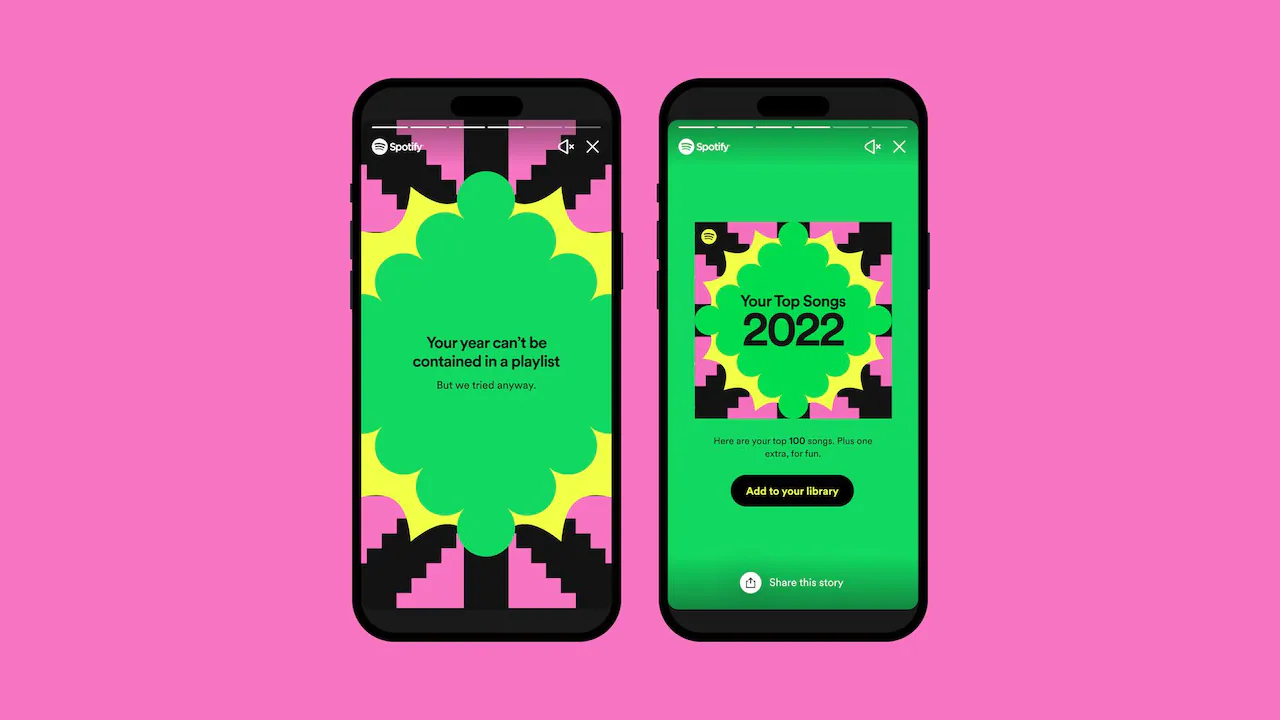
Right before the holiday season hits, Spotify Wrapped season takes center stage. For what seems like days on end, music listeners are posting their stats about which artists they listened to and for how long, as well as sharing witty quips about their listening styles. Spotify has taken the user data it collects to a granular level and turned it into a memorable, exciting event that happens each year. The most popular music streaming service in the world, with 456 million users and 195 million subscribers, Spotify has captured the ears and hearts of music enthusiasts all over the world. It has an easy-to-use platform, an affordable price point, and an endless library, but on the artist side, the value is questionable.
Spotify Wrapped Season
In an effort to offer artists and music labels more value, Spotify has built out a robust platform for artists called just that – Spotify for Artists. During Spotify Wrapped season, artists can see the total number of hours their songs were streamed, how many countries they reached, changes in their follower count, and even how many playlists they were featured on. All this data is helpful in analyzing growth for artists, but recently, some musicians have publicly criticized Spotify’s treatment of artists. Most of this criticism comes from a financial perspective.
Do Artists Make Money on Spotify?
When music streaming first became more popular than buying a record, artists grew accustomed to fairly straightforward payout methods from royalty agreements and streams. Each platform essentially paid artists a set amount based on how often their songs were listened to, and many music platforms still offer transparent payout methods. Apple Music, for instance, pays artists an average of $0.01 per stream and Tidal pays an impressive $0.013 for every stream. Spotify, on the other hand, has a confusing and elusive process for determining how much each artist gets paid. The platform considers paid subscriber streams vs. non-paid accounts as well as geography, and more. For artists and their labels, this results in hard-to-understand payouts that are much lower than competing streaming services. On band, ‘You, Me, and Everyone We Know,’ shared that their 1.1 million streams according to Spotify Wrapped brought in a total of $7,700 in gross revenue. Another group, ‘Dikembe,’ tweeted that fans would have to stream their songs 3,000 times for them to make as much money as they would from selling a record.
Losing Artistry to Administrative Tasks
Tracking royalties, understanding listener trends, and sorting through all the data that exists in the music industry is making it hard for labels and artists alike to stick to what they know best – music! Today, artists themselves are expected to be social media managers for their art, understand many different royalty calculations, plan tours, and get new songs to their fans. Frankly, it’s too much. The best labels work to shield their artists from those extra administrative tasks but keeping up with the digital world requires a lot of work! At Korrect, we take some of the load off labels so they can take some of the load off of their artists. Our platform connects streaming platforms like Spotify to process and understand incoming royalties, listener data, and more. Though we can’t make Spotify pay artists more, we can provide more clarity as to what they are getting paid and why, taking some of the guesswork out of the equation. Yes, Spotify has made it seem like transparency is a company value, and while that may ring true for listeners, artists don’t feel the same.




